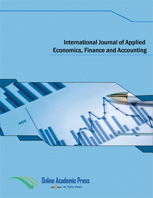A Markov-Switching model of public debt in South Africa
DOI:
https://doi.org/10.33094/ijaefa.v18i2.1376Keywords:
Debt regime, Markov-switching, Public debt, South Africa.Abstract
This research aimed to explore the sustainability of public debt with changes in the South African regime from 1960 to 2020. Annual data was obtained from the South Africa Reserve Bank, and the Markov-switching autoregressive (MS-AR) model was employed to describe the public debt process in South Africa. Compared to traditional endogenous modelling, the process explicitly allows for the possibility of regime changes. Regime 1 defines the stages of high public debt, and regime 2 describes periods of a downward trend in public debt. The results reveal that in regime 1, there is a 98% likelihood of remaining in high public debt and a lower probability of 1.76% switching to a lower public debt regime. Also, when the system is in a lower debt regime, there is a 98.2% likelihood of remaining in a lower public debt state and a lower probability of 1.74% switching to a higher public debt state. The expected average duration of a period of higher public debt is 56 years, while the average duration of a lower public debt regime is 57 years. This implies that it is only in an extreme event that public debt can switch from a high-debt regime to a low-debt regime and vice versa. Hence, it is suggested that the government implement policies knowing that public debt will not decline suddenly.
Downloads
Published
Issue
Section

This work is licensed under a Creative Commons Attribution-NonCommercial 4.0 International License.




